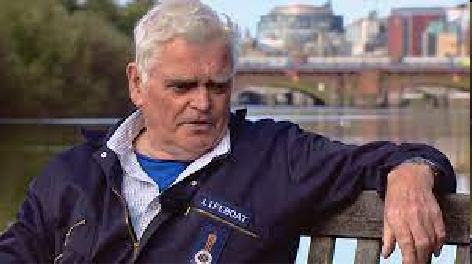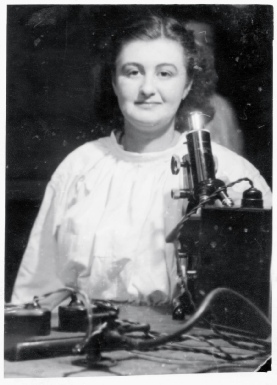
Whitehill Former Pupils’ Club

Made With Serif WebPlus.


Best viewed with Chrome
|
Famous Former Pupils |
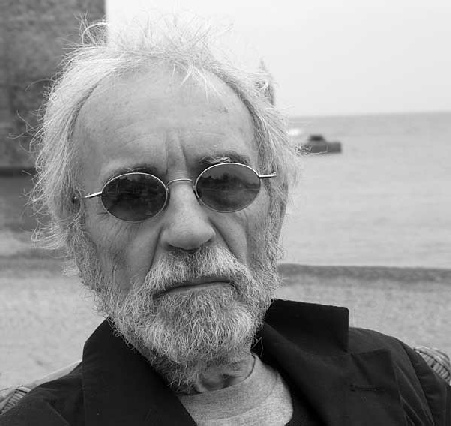
Campbell Armstrong (1944–2013) Author
Campbell Black was born Thomas Campbell Black in Govan and attended Golfhill Primary School and Whitehill Senior Secondary School in Dennistoun. He graduated with a degree in Philosophy from the University of Sussex, England. He taught creative writing from 1971-74 at the State University of New York at Oswego; from 1975-78 he taught at Arizona State University. He worked for some years as a fiction editor with various London publishing houses. After living for many years in England and the United States, he moved to Shannon Harbour, Ireland. He died on 1 March 2013, four days after his 69th birthday.
His novels Assassins & Victims and The Punctual Rape won Scottish Arts Council Awards.The Last Darkness and White Rage were nominated for the Prix du Polar. His quartet of Glasgow novels consists of The Bad Fire, The Last Darkness, White Rage, and Butcher. He also wrote a memoir titled All That Really Matters, retitled in the United States as I Hope You Have a Good Life. His work has mainly been influenced by R L Stevenson and he ascribes a certain 'dark apect' of his writing to the opening scenes of Treasure Island. Among other influences he includes Kafka, Fred Vargas, Kobo Abe, and Camus. His books have been translated into French, German, Greek, Japanese, Italian, Hebrew and Polish.
Biography from wikipedia with additions and modifications
See also: Campbell Armstrong's Return to Glasgow
His website: http://www.campbellarmstrong.com/
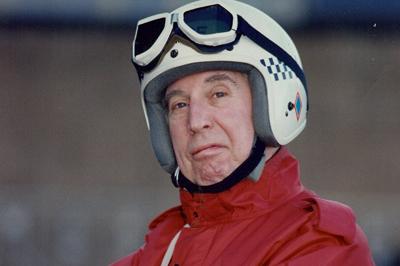
Rikki Fulton (1924 - 2004) Actor
Rikki Fulton's parents married and set up home in a room and kitchen in 55 Walter Street. They bought a newsagent shop at 28 Roebank Street and purchased another some years later in Cumbernauld Road and for a short while lived in the back of the Roebank Street shop until moving to a room and kitchen at 46 Appin Road. It was in this top floor flat that Robert (Rikki) Fulton was born and raised in his first few years.
The youngest of three boys, he and his family later moved to Riddrie. He was a pupil at the local Riddrie primary school and then returned to Dennistoun as a pupil of Whitehill Secondary School. He left Whitehill in 1939 and his talent as a performer became evident during a turn of acting in the St. Andrews East Church Hall. He later volunteered at the age of 17 for the Navy in 1941 and almost lost his life when his ship the Ibis sank under enemy fire in the Mediterranean during the Second World War.
Rikki Fulton was compere to the big music bands, a voice on radio, and actor on stage and screen. Most notably he was one half of the Francie and Josie duo that continued for many years on stage and successfully carried over to television. He also performed in the comedy television program Scotch and Wry and the highly acclaimed film Gorky Park. His latest character, the despondent Reverend I. M. Jolly, would broadcast his melancholy remarks to the people of Scotland just before the beginning of a new year. Rikki Fulton received an honorary doctorates from St Andrews University June, 2000.
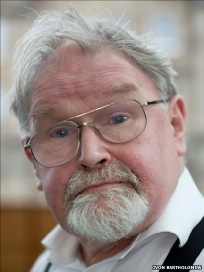
Alasdair Gray (1934 -2020 ) Artist / Author
Born in Glasgow and educated at Whitehill Secondary School he graduated from Glasgow School of Art in 1957 and taught there some five years later. A selection of his artwork is displayed at the People's Palace in Glasgow Green. He also published several plays and books:Lanark(1981), Janine (1982) and The Anthology of Prefaces(2000). His book Poor Things won the Whitbread Novel of the Year Award and "The Guardian" Fiction Prize. The Anthology of Prefaces(2000); Poor Things (1992); Something Leather(1991); Janine(1982);Lanark(1981).
See Also: Lanark 1982 (An unofficial Alasdair Gray website)
To see Alasdair’s contributions while attending Whitehill click on the button below.
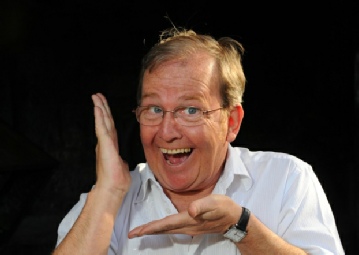
Ford Kiernan (1962 - ) Actor / comedian
Born in Dennistoun and educated in Alexandra Parade Primary and Whitehill Secondary. As a young boy Ford washed cars for pocket-money and had fun with his impersonations, jokes and songs. On leaving school he tried his hand at everything; driving, labouring, bar work and tailoring. He worked in the popular clothing shops of the time in Glasgow including City Cash and Mann the Tailor. It was in marketing that he gained the confidence
required for stand-up comedy. Ford now brings to the television and stage his own brand of near-the-knuckle humour in Chewin' The Fat and Pulp Video. He has developed well known characters into household names such as Ronald Villiers, the worst actor in the world and Jack Jarvis in Still Game.

Lulu (1948 - ) Singer
Born Marie McDonald McLaughlan Laurie in November 1948 she grew up in Garfield Street, Dennistoun, where her father worked in an abattoir and her mum worked in a bread shop. She is the eldest of four children, singing since the age of three, and publicly performing at the age of nine. She had a hit with Shout in 1964 and won the Eurovision song contest with Boom Bang-A Bang. She played Adrian Mole's mother on TV and got a guest spot on Morcombe and Wise and later in Absolutely Fabulous. She sang two movie themes, To Sir With Love for the film of the same name with Sidney Poitier and The Man With the Golden Gun, the James Bond film.
After two failed marriages she came back with a flourish with her 1993 song Independence. She has had 16 top 40 hits including her first ever number one with boy band Take That in 1993 with Relight My Fire. Latest film, Whatever happened to Harold Smith with Tom Courtney and has released a new album, Where the poor boys dance, co-written with her brother Billy. She was main anchor in Red Alert the television program that precedes the UK national lottery game. Received the OBE in the Queen's birthday honours list 2000.
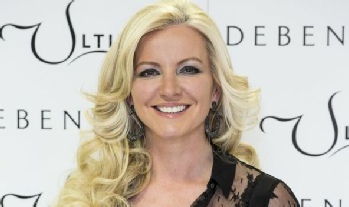
Lady Michelle Mone of Mayfair OBE (1972- ) Entrepreneur
Born and raised in Dennistoun she attended Whitehill Secondary School. Founder of Govan-based MJM International now has a turnover of £3 million (BP) per annum. She left Whitehill Secondary School at the age of 15 and always had burning ambitions to be her own boss. Model turned business accounts manager she set up her company in 1998 after being made redundant.
Lady Michelle Mone of Mayfair OBE, is the is the founder of Ultimo Brands International, the UK’s leading designer lingerie brand. Listed as one of the top three female entrepreneurs in the UK, Michelle has built a hugely successful career on an incredibly simple concept: giving today’s women what they want. Her vision is to “help women to look and feel their very best”. It was upon that simple concept Baroness Mone built her career and influence, being honoured with a Life Peerage to the House of Lords by the Prime Minister and an OBE from Her Majesty the Queen for her outstanding contributions to business.
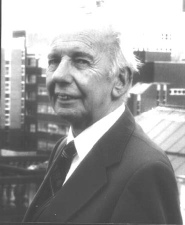
Jack House Mr Glasgow
He was born in Tollcross, then technically outside of the Glasgow city boundaries. This, together with the fact that neither of his parents was born in Scotland, would come as a surprise to those who knew him as "Mr Glasgow", so thoroughly did he identify himself with the culture and people of that city. He felt that Glasgow was a fairly autonomous "city state". That his father, also John, was a prosperous company secretary and Jack himself trained as an accountant would only add to the surprise, given Glasgow's "Red Clydeside" reputation.
The family rapidly moved to Dennistoun where Jack (and subsequently his four brothers and three sisters) attended Whitehill Secondary School. At his father's insistence he began training as an accountant. Accounting did not suit Jack's temperament, nor did it challenge his abilities, which lay towards writing, spinning yarns and acting.

Dame Jean Roberts, Lord Provost of Glasgow.
Jean Barr MacDonald Roberts lived from 20 December 1895 to 26 March 1988. She was the first woman to serve as Lord Provost of Glasgow.
Jean Weir came from the Springburn area of Glasgow a centre for heavy industry and known especially for the manufacture of railway engines for export throughout the world. She was educated at Whitehill School ( 1907-). After leaving school she trained to be a teacher before taking up a post at the Bishop Street Elementary School. In 1922 she married Cameron Roberts, also a teacher, and they had a daughter together.
Jean Roberts was a socialist by outlook, and both she and her husband were members of the Independent Labour Party. In 1929 she stood for election to Glasgow Corporation as a councillor for the Kingston Ward, an area dominated by docks on the south side of the River Clyde. In 1933 the Labour Group on the Council gained control of the city, and Jean Roberts held a number of positions within the city administration. These included Senior Magistrate in 1936 and City Treasurer in 1952. She became leader of the Labour Group on the City Council in 1955.
In 1960, Jean Roberts became Lord Provost of Glasgow, a post for which she had been nominated a number of times since 1950. As the city's first female Lord Provost she was unique in Scotland until the 1980s.
She was made a Dame Commander of the British Empire (the female equivalent of a knighthood) in 1962.
She served as a Glasgow City Councillor until 1965, and subsequently became Chairman of the Cumbernauld Development Corporation, a post she held until 1972.
Dame Jean Roberts died in Glasgow in 1988.
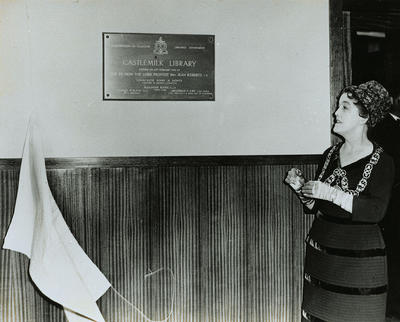
Dr. Martha Davidson Devon
This account of the life of Dr. Martha Davidson Devon is summarised from her obituary which was published in the British Medical Journal, January 20th, 1962.
Martha Davidson Devon was born in Glasgow on 2rd April, 1897, the daughter of Dr. James Devon, himself a man of great distinction. She was educated at Whitehill School, probably during the period of 1909 to 1914 or 1915, continuing at Glasgow University. She graduated with “the Scottish Triple Qualification” in 1923 and took up resident posts at Glasgow Royal Infirmary. She specialised in psychological medicine.
In 1928 she entered general practice and took up a locum position on Islay, which led to her appointment as the first woman doctor to the small isles of Rum, Muck and Canna, from Eigg on which she lived. There was no transport on the islands, no telephone except at the post office which was two miles away. The mailboat called once per week. Visiting calls to patients was on foot and by small boat often crossing 20 miles of open sea.
Being a constant sufferer from such poor and primitive conditions, Martha's abiding interest was in improving them. In 1931 the Department of Health asked her for suggestions, she proposed flying a surgeon and sister to the patient. The idea was laughed at, so she promptly persuaded the editor of the Daily Record, then running stunt flights, to fly her to Eigg, landing on the beach. Thus she pioneered the first medical flight to the islands, now quite commonplace.
In 1936 after eight years of this strenuous life Dr Devon was appointed to the parish of Glenelg on the western seaboard of Inverness-shire. This is a wild and wintry location which at that time was served by gravel roads. Her patients were located across a wide area, mountainous and riven by deep and long sea lochs. Travel to many was by boat, but during this time she learned to drive. The war added to her duties as she took up the role of Medical Officer to the Home Guard.
After the war she continued as the local doctor serving her community. Her psychological training helped her to see more than met the eye, her judgements were rarely in error and she had great sympathy and understanding for her scattered patients, especially the elderly.
In her leisure time she bred budgerigars in her open air aviary and worked for charitable causes, again for the benefit of the elderly.
In Martha's later years she suffered from arthritis, aggravated by years of strain and exposure and retired to the drier Cromarty Firth area, where she lived for only a year. Dr Martha Davidson Devon died on 31st December, 1961 aged 64.
Sir David Stirling Anderson (1895-1981)
Sir David Anderson graduated Associate in Mechanical Engineering of the Royal Technical College, Glasgow in 1921, following service in the Royal Air Force, with the rank of 2nd Lieutenant, in 1918.
He obtained engineering experience with the North British Locomotive Company and with Fullerton, Hodgart and Barclay, then held several higher academic posts in Derby Technical College and Birmingham College of Technology, before becoming Director or Principal of the Royal Technical College, Glasgow from 1946-1959.
During his term of office discussions took place on the expansion of technological education in Britain, and the future development of the Royal College, which led eventually to the award of University Charter and the establishment of the University of Strathclyde in 1964.
Sir David was knighted in 1957 and received Honorary degrees from Glasgow University in 1961 and from Strathclyde in 1965.
He served as a member of the Robbins Committee on Higher Education and on many other professional bodies. He died on 18 January 1981.
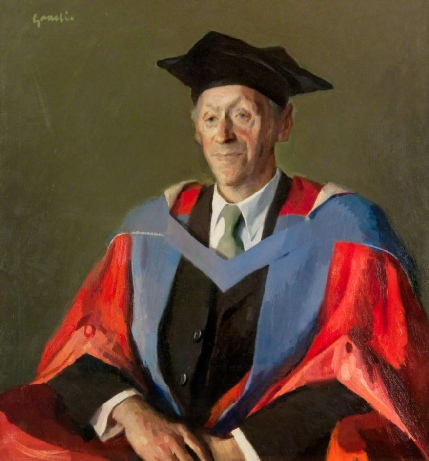
Sir William Weipers
Weipers was borne in Kilbirnie, Ayrshire. A son of the manse, he was educated at Whitehill Higher Grade School in Glasgow, and went on to graduate MRCVS from the Glasgow Veterinary College in 1925.
He went into general practice from 1925 until 1949, apart from a period of two years (1927 to 1929) when he became a member of staff of the Royal Vetinerary College. A pioneering small animal surgeon, he introduced closed circuit anaethesia to veterinary practice and was known for small animal orthopaedics.
When the private veterinary colleges were brought into the ambit of the university system, Weipers was made the first Director of Veterinary Education at the University of Glasgow (1949–1974); Professor of Veterinary Surgery from 1951 to 1974, and the Dean of the Glasgow Veterinary Faculty from 1969 until 1974. He supported the creation of a veterinary school which became renowned for teaching and research. He was knighted in 1966 for his services to Veterinary Education.
Among students of Weipers were James W Black and veterinarians such as Sir James Armour, Professor WFH Jarrett FRS, Professor RJ Roberts FRSE and Professor M Murray FRSE. All of them presented the Weipers Memorial Lecture, a biennial talk at the University of Glasgow.
On his retirement Weipers devoted time to arboriculture but also played a role in the establishment of academic aquaculture, as chairman of the management committee of the Nuffield Institute of Aquaculture, at the University of Stirling. For this work he was awarded the honorary degree of Doctor of the University in 1978. He was later awarded the honorary degree of Doctor of Veterinary Medicine and Surgery by his alma mater (1982).
Weipers died in 1990 at the age of 86.
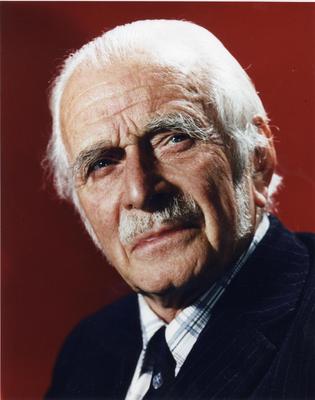
Professor Sir Herbert Livingston Duthie.
Herbert L. Duthie was born in Glasgow on 9th October 1929 and attended Whitehill School during the years of the Second World War. He was school captain 1946-47. Herbert attended Glasgow University and graduated MB, ChB in 1952, with further advanced degrees in 1959 and 1962. ( see Magazine Summer 1963) He served in the RAMC from 1954 to 1956 and held several posts at Glasgow Western Infirmary and in 1959 took up the Rockefeller Travelling Fellow post at the Mayo Clinic in the USA. Returning to the UK in 1960 he lectured in surgery at Glasgow and Leeds and was appointed professor of Surgery at Sheffield University a post he held from 1964 until 1979. In 1979 he was appointed Provost of the University of Wales, College of Medicine, which position he held until 1994. He received his knighthood in 1987.
Professor Duthie published numerous important medical and surgical papers, chaired and took part in committee activities, both monitoring and managing the profession and in the advancement of medical and surgical practices.
Herbert L. Duthie died on 24th April, 2014 at his home in Cheltenham, Glos.
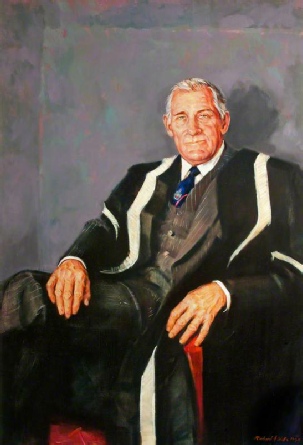
C.J.Fordyce
Christian James Fordyce (1901-1974) was a graduate of the University who was Professor of Humanity, 1934 to 1971. He was Clerk of Senate from 1940 to 1971 and Dean of Faculties in 1973.
Born in Fraserburgh, Fordyce studied at the University as a Forfar Bursar and later as a Sandford Scholar in Greek. He graduated MA in Classics with first class honours in 1920, and won the Thomas Logan Medal in 1921. In 1920 he went to Balliol College, Oxford as a Snell Exhibitioner and Newlands Scholar and became one of that University's most distinguished classical students.
Fordyce was appointed War Memorial Research Student in Classics at Balliol in 1925, moving to St Andrews later in the year as a lecturer in Greek, then to Edinburgh to lecture in Humanity, and to Oxford as Fellow, Classical Tutor and Librarian at Jesus College. He came back to Glasgow in 1934 on his appointment to the Chair of Humanity. According to the Glasgow Herald, he was described in 1962 as "a powerful advocate and formidable opponent in debate, and the greatest living expert on the ordinances and regulations of the Scottish universities".
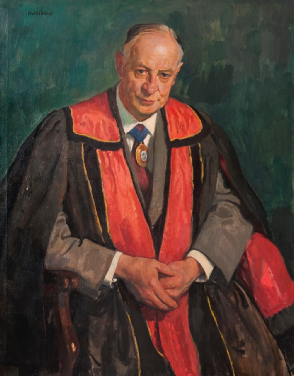
© The estate of Alberto Morrocco.
Photo credit: Royal College of Physicians and Surgeons of Glasgow
Professor Joseph H. Wright
Joseph Wright (1899–1990) gained his medical education at the University of Glasgow and became a Fellow of the Royal Faculty of Physicians and Surgeons of Glasgow in 1932. Until his retirement in 1964, he was Senior Consultant Physician at Glasgow Royal Infirmary and for many years a Clinical Lecturer at the University of Glasgow. He was President of the Royal Faculty of Physicians and Surgeons of Glasgow from 1960 to 1962 when the Royal Faculty became a Royal College.
Bill Patterson
Bill Paterson was born on June 3, 1945 in Glasgow, Scotland. He attended Whitehill School during the 1960's. He is an actor and writer, known for The Killing Fields (1984), The Witches (1990) and The Adventures of Baron Munchausen (1988). He is married to Hildegard Bechtler. They have two children.
Trained as a drama teacher at the Royal Scottish Academy of Music and Drama.
He was nominated for a Laurence Olivier Award in 1982, for his performance as "Schwekyk" in Bertolt Brecht's "Schwekyk in the Second World War", at the National Theatre.
Has worked on many voice-overs for documentaries such as Equinox, Horizon and Reputation. He has also worked extensively in radio, and has written and read his own stories for BBC Radio.
He played King James I in Will Shakespeare (1978) and his son, King Charles I, in The Return of the Musketeers (1989).
He appeared in the movie The Killing Fields (1984), with Law & Order (1990) US star, Sam Waterston.
He was awarded the Outstanding Contribution to Film & Television accolade at the 2015 British Academy Scotland Awards.
Dr. Ronald M Cresswell
Dr. Cresswell earned a bachelor's and a doctorate in applied chemistry from the University of Glasgow, and earned an A.M.P. from Harvard University and an Honorary Doctor of Science degree from the University of Strathclyde. The author of numerous publications, Dr. Cresswell is a member or fellow of many notable associations and societies, including the Royal Society of Edinburgh, the Royal Society of Chemistry, the Royal Society of Medicine, and the Royal Society of Arts and Commerce.
Dr. Cresswell held several senior level management positions with Warner-Lambert, including vice president and chairman of its Parke-Davis Pharmaceutical Research Division. Prior to this, Dr. Creswell held a 25-year career with the Wellcome Foundation, Ltd., serving in a variety of positions, including central coordinator for group research and development, and chairman and CEO of Coopers Animal Health Ltd.
Ronald Cresswell has been a great supporter of Whitehill Former Pupils Club and in 2012 was awarded FP Club “Achievement Award”
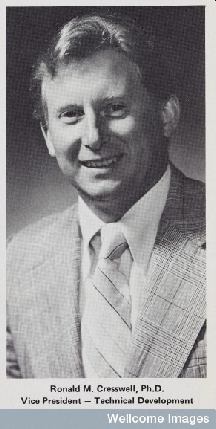

Sir JOHN TAYLOR, C.I.E., D.S.O., M.D., LL.D. D.P.H.
John Taylor graduated from the University of Glasgow MB in 1905 and MD in 1913. He was born on the 14 February 1884 in Glasgow. His father was William Taylor, a dental surgeon. He first matriculated at the University in 1901 to study for a medical degree. Whilst at University, Taylor had a highly successful academic career, winning prizes in subjects such as Clinical Surgery, Clinical Medicine and the Practice of Medicine.
After graduating, Taylor completed two years of military service in India. He then worked for the Haffkine Institute in Bombay, a biomedical research institute. During this time researched the development of the bubonic plague in India.
Taylor then returned to his military duties from 1914 to 1920, and was frequently mentioned in dispatches. After his service he moved to Burma to join the Pasteur Institute, working in general bacteriology and pathology research. In 1932 he was appointed as the new director of the Central Research institute, Kasauli, a position which he held for the next 12 years. During this period Taylor undertook research on snakes and snake venom and refining anti-venom serum.
In addition to his research, Taylor was also the editor of the Indian Journal of Medical Research, and sat on various Army Pathology Advisory Committees in India. He also played a key role in developing legislation surrounding the manufacture and sale of biological products in India. Taylor partially set up a biological standards laboratory at the Central Research Institute in India and assisted with drafting Drugs Act legislation. He retired from India in 1944 and worked part time for the Medical Research Council.
Taylor held various titles throughout his career, receiving his knighthood in 1942 having been promoted successively to colonel and major-general while at Kasauli. He served as Honorary Surgeon to the King from 1939 to 1941 and Honorary Surgeon to the Viceroy from 1936 to 1941. In 1945 he was awarded an LLD from the University of Glasgow.
Original Source: Glasgow Herald, Report on Whitehill School Jubilee, Sept24, 1948
Above : Glasgow University Online Archive.
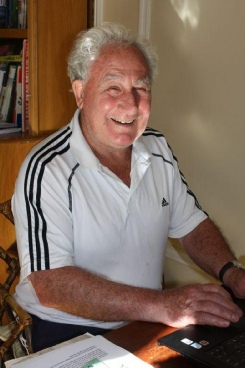



Tom Mc Nab
Tom McNab attended Whitehill School in the late 1940's early 1950's and was school captain in 1951. He was a keen sportsman excelling in the triple jump and football. After service in the Royal Air Force, he trained as a P.E.teacher and in 1963 he became a national athletics training coach, helping a number of well known athletes to success, including Daley Thomson.
Tom is the author of several best selling books on sport, including Triple Jump (1968), Decathlon (1972) and the highly regarded novel, Flanagans Run (1982). In 1978 he was appointed script advisor and technical director for the Oscar winning film “Chariots of Fire”.
Tom was a member of the London Olympic bid team which successfully brought the games to the capital in 2012. He has written successful plays but continues his sport training and his latest success has been with the world class long jumper, Greg Rutherford.

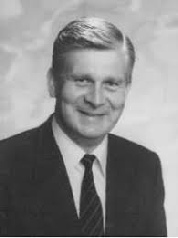
Professor Robert Ramage, FRS
Robert Ramage attended Whitehill School in the 1950's. A school magazine of 1956 shows him seated with other prefects as vice captain.
He completed his B.Sc. and Ph.D. under the supervision of Ralph Raphael at Glasgow University. He then undertook post-doctoral work with Bob Woodward at Harvard University, 1961–63, on the synthesis of vitamin B12, and at the Woodward Research Institute, Basel, 1963–64, on the synthesis of cephalosporin C.
In 1964, he was appointed Lecturer in Organic Chemistry at the University of Liverpool and there followed a five-year period of research on the synthesis and biosynthesis of alkaloids with Alan Battersby, 1964–69, and later with George Kenner on protein synthesis.
In 1977, he was appointed Professor of Organic Chemistry at UMIST, becoming Head of Department in 1979. He went to Edinburgh University in 1984 as Forbes Professor of Organic Chemistry, serving two spells as Head of the Department of Chemistry before his retirement in 2001, when he became Scientific Director of Albachem Ltd.
Bob Ramage was married to a Whitehill girl, Joan Paterson, and they maintained close academic and personal contact and friendship throughout with Dr. Ron Cresswell and his wife.
To quote Ronnie Cresswell, “ The story of a Whitehill boy who became a giant in his field of chemistry. He never became a headline scientist because he remained to the end just as Bob Ramage. Football and Rangers daft. The best that Glasgow and Scotland has to offer and he never forgot his roots.”
Professor Ramage was a past-president of the Perkin Division of the Royal Society of Chemistry and a Fellow of the Royal Societies of both Edinburgh and London.
Professor Robert Ramage, FRS died on 16 October 2019.
James Hendry, Linguist, Translator, Poet and Author.
James Findlay Hendry was born on 12 September 1912 and raised in Balgrayhill Road, Springburn. He was educated at Whitehill School in Dennistoun, from 1924 to 1930. He is mentioned in the Summer 1930 school magazine having won the prize for French and German. James also took first prize in the 1930 Burns Club essay.
He studied Modern Languages at the University of Glasgow although he did not graduate. He served in the Intelligence Corps during the Second World War and when the war was over he left Scotland to travel through Europe, Africa and North America as a translator with the United Nations.
He was Director of the School of Translators and Interpreters at Laurentian University, Ontario, Canada. Co-editor of three anthologies: The New Apocalypse, White Horsemen and Crown and Sickle. His poetry collections include The Bombed Happiness (1942) and The Orchestral Mountain (1943). He wrote a novel, Fernie Brae: A Scottish Childhood (1947), based on his childhood memories that has been suggested as influencing Alasdair Gray's Lanark (1981). Other works include Scottish Short Stories (1969), Marimarusa (1978), Your Career as a Translator and Interpreter (1980) and The Sacred Threshold: a Life of Rilke (1982).
He had plans to return to Glasgow but died in Toronto on 17 December 1986.
Dr June Almeida (nee Hart)
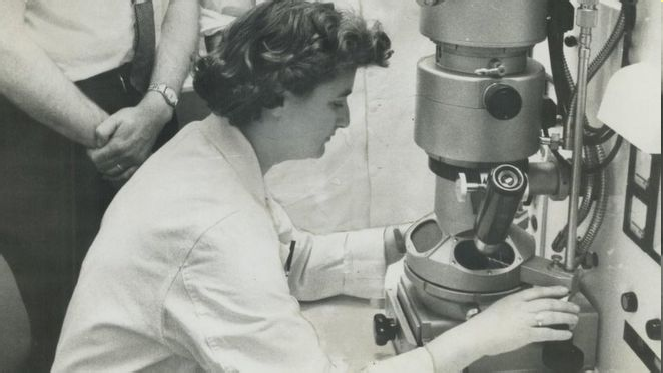
You may have glanced at or read through a story which appeared on the BBC website, The Herald and even the Irish Times, of a girl from Dennistoun who became an internationally renowned virologist whose skills in electron microscopy enabled her to not only identify viruses, to shed light on viral infections and also to improve methods of diagnosis. As June Hart, she was brought up in a tenement flat in Duntroon Street, Dennistoun and it was
reported that she left school at 16 with “no formal education”. We decided to investigate further and lo and behold, found that this could not be further from the truth. June attended Whitehill School, leaving in 1947 having won the science prize that year (Summer 1947 magazine) and no doubt with an excellent education. She did not have the funding to go on to university. On leaving school she became a laboratory technician at the Royal Infirmary, followed by a position at St. Bartholomews in London, in the histopathology laboratory. She married and emigrated to Canada where she studied electron microscopy and authored several scientific
papers on the structure of viruses. June and her family were lured back to the UK in 1964 to work at St Thomas's Hospital in London. June taught many virologists including a doctor from the National Institute of Health in the U.S. who went on, using June's techniques, to identify the Norovirus. She continued, whilst at St Thomas's Hospital, together with other investigators and observed a new virus with what appeared to have a halo or crown around it. This was named by them as Coronavirus. She was awarded a DSc and today most virology review articles and textbooks contain her electron micrographs of viruses.
Dr June Almeida died in 2007, at the age of 77. Now 13 years after her death she is finally getting the recognition she deserves as a pioneer whose work sped up the understanding of the virus that is currently spreading across the world.
Dr Charles McEwen
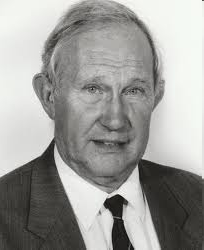
Charles McEwen was a consultant ophthalmic surgeon at the Glasgow Eye Infirmary and Gartnavel General Hospital, providing first class care for those with vision or eye problems for nearly 50 years. He was born and brought up in Dennistoun and attended Whitehill School, leaving in 1948. He graduated from Glasgow University in 1953, and served in posts at Stobhill and the Victoria Hospitals before National Service took him to Germany with the RAMC reaching the rank of Captain. On his return to the NHS he was appointed to a consultant post at age 30 making him one of the youngest consultants in the country. He helped to influence and shape opthalmology services in Glasgow. He introduced the then highly innovative operating microscope and embraced
leading-edge surgery for a wide spectrum of conditions, particularly for cataracts and diseases on the cornea. One high-profile case received much publicity at the time. The family of a young girl, Marie Queen, who had been blind from birth, was told that she would never see. Dr Mc Ewen, using a pioneering technique restored her sight, a result described at the time, as a miracle.
Dr McEwen was a Fellow of the Royal College of Physicians and Surgeons of Glasgow, the Royal College of Surgeons of Edinburgh and the Royal College of Opthalmologists.
Charles died on 1st February 2020 after a short period of physical decline.
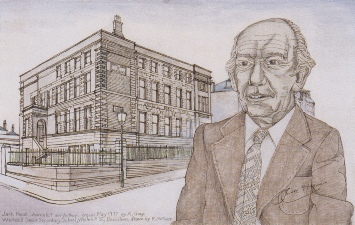
John Foster CBE 1920-2020 Conservationist
John Foster played an important and innovative role in conservation in England and Scotland, both in the establishment of national parks and improving public access to the countryside. His most significant achievement was putting in place the groundwork for national parks in Scotland in face of strong opposition from a range of interests.
He attended Whitehill in the nineteen thirties and then trained as a quantity surveyor at the Royal Technical College (now the University of Strathclyde), subsequently qualifying as a charted surveyor and town planner. During the war he worked on aerodromes in north east Scotland. His first post–war appointments were with Kirkcudbright County Council and then with Holland County Council, Lincolnshire.
In 1952 he was appointed as Deputy Planning Officer of the newly created Peak District National Park, rapidly becoming an innovative first Director. In 1954 he pioneered the first ranger service in Britain, and set up the Peak District Mountain Rescue Organisation and the Edale Mountain Rescue Team. Kinder Scout, the site of a mass trespass of 1932, is within the Park and he was conscious of the need to establish easier access to the land for everyone to enjoy. He successfully fought off attempts by commercial interests and local authorities to encroach on the park and he also played a significant role in the successful campaign to save the trans-Pennine Hope Valley railway line which serves the Park.
In 1968 he became the first Director of the new Countryside Commission for Scotland (CCS), with a brief to safeguard Scotland’s natural beauty and secure improved public enjoyment of its open spaces. It was a difficult charge, with numerous conflicting interests with to overcome – forestry, hydro power, public and private land owners, and the demands of the oil and gas industry. But with a combination of courtesy, innovation and pragmatic delivery he was able to achieve his remit and protect the most sensitive parts of countryside from inappropriate development.
Faced with strong opposition, his pragmatic approach to establishing National Parks was through a combination of promoting environmental education and well crafted reports, which highlighted the scenic value and natural attractions of Scotland. His major work “A Parks System for Scotland” established the basis for Regional Parks and Country Parks, and set out the arguments for the eventual establishment of national parks in Scotland in 2002, fifty years after National Parks were introduced in England and Wales.
On retirement in 1985 he was awarded a CBE for services to conservation. He continued to contribute to conservation and public access legislation in Scotland and abroad, the latter through his work with the Federation of Nature and National Parks of Europe and in the International Union for Conservation of Nature’s Commission on National Parks and Protected Areas. At the age of 98 he contributed to an oral history project to celebrate the 1949 National Parks Act.
On his return to Scotland John Foster lived in Crieff, where he died in July, a month short of his hundredth birthday.
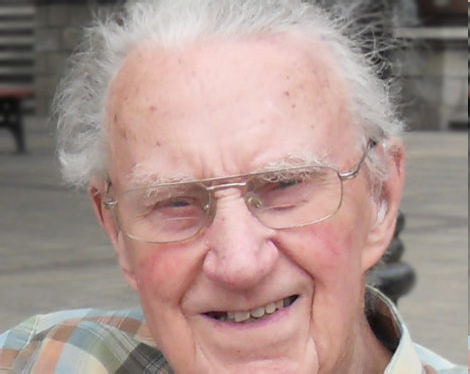
Eliza Janet Thomson ( Barry St. John)
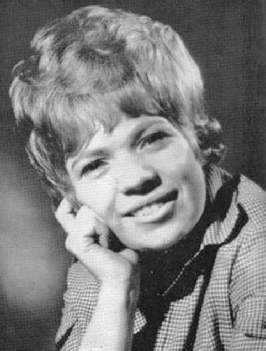
Eliza Janet Thomson was born and grew up in the Gallowgate area of Glasgow and attended Whitehill Secondary School in the late 1950’s. She first found her voice taking part in tenement backcourt concerts and at age 14 made her first professional appearance singing with the Midnighters. She went on to sing with The Playboys, Bobby Patrick and the Big Six, playing American airbases and then on to Hamburg.
After three years she returned to London and took a stage name, Barry St. John, ( Barry from a dancer and St John from a famous Liverpool footballer). Although she had success with individual recordings, her greatest achievements came as backing singer on several of the most important and influential albums of the 20th century, including Pink Floyd’s “Dark Side of the Moon”. Her voice can be heard on John Lennon’s “Power to the People” on the Imagine album, Bryan Ferry’s “Smoke gets in your Eyes”, and three tracks on Elton John’s “Madman across the Water” album, including its most lastingly famous song, “Tiny Dancer”.
After her singing career she worked as a legal assistant in London, before retiring in 2007 following a minor stroke, she died in July 2020 at age 76.
Dorothy Paul
Dorothy Paul (born 1937 as Dorothy Pollock) is a stage and screen actress, comedian, and entertainer. She attended Whitehill School in the 1950's. Dorothy was awarded the Whitehill F.P. Lifetime Achievement Award in 2013 at the F.P. club annual dinner. She made an inspirational speech primarily intended for the table of current pupils in attendance.
Dorothy Paul was a regular on Scottish TV in the 1980’s and 90’s and had her own New Year programmes that featured her singing and telling stories of her childhood.
Comedienne and raconteur Dorothy Paul started in theatre after winning a talent competition. She joined Scottish Television's “The One O'Clock Gang” in 1959. She appeared at the Butlin's Holiday Camp from 1974 and hosted Housecall. She also starred in the soap opera “Garnock Way” and the successful stage dramas “The Steamie” and “The Celtic Story”. From 1991 she became noted for her one-woman shows including “Now That's Her”, “Now That's Her Again” and “The Full Dorothy”, demonstrating her talent for humorous observations from her childhood and her impersonations of Glasgow characters.
She currently lives in Glasgow. She has expressed a keen interest in painting. She is also a patron of The Family Addiction Support Service (FASS), a charity in Glasgow offering support services to those affected by drug and alcohol addictions.
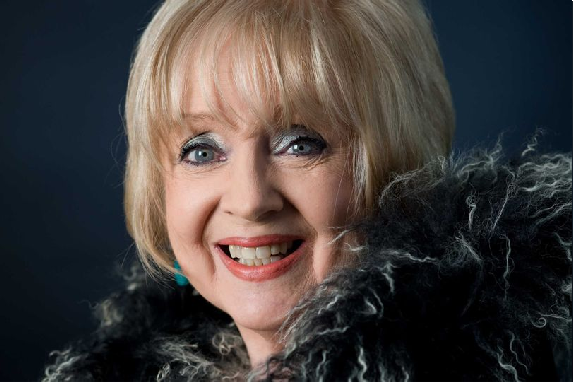
George Parsonage, M.B.E.
George Parsonage, glasgow born sculptor, working exclusively with materials retrieved from the River Clyde, such as supermarket trolleys, motor cycle parts, machinery and other discarded items. He graduated from Glasgow University in 1967, becoming an art teacher at Whitehill School for twenty-one years. He is a former pupil of Whitehill School.
Sculpture is his second vocation. His first is life saving; as head of the Glasgow Humane Society, the oldest life-saving society in the world (est. 1790), a post which he inherited from his father in 1979. Based at Glasgow Green, the society is responsible for rescuing people from the River Clyde. It has been widely reported that George has saved the lives of over 1500 people.
Of his sculpture, he never exhibits his work and declines commissions, but the proceeds from the sale of his work benefit Macmillan and other charities. George Parsonage is viewed as a hero by many Glaswegians, and by those who owe their lives to both him and his family in days gone by. He was awarded an MBE in 1999 and The Queen's Diamond Jubilee Medal in 2012.
George was awarded the the Lifetime Achievement Award by Whitehill School F.P. Club in 2008 and in 2020 was awarded “ The Pride of Scotland” Award.
